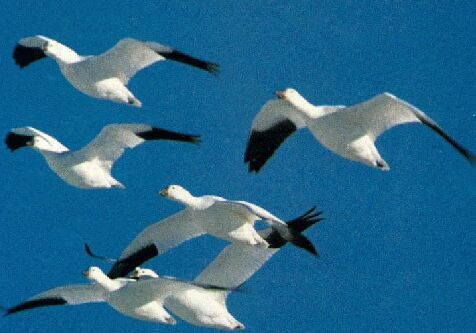
Links
Mission 2007
MIT Homepage
Team Webpage
Team 6 Members
Chi Chiang
Adina Fischer
Stephanie Lee
Zachary Watts
Contact info:
slee1@mit.edu
Team 6 Goals
September 22, 2003
Preliminary Research on bird species in ANWAR
major bird species that use the north slope as a breeding ground:
- pectoral sandpiper

- semipalmated sandpiper

- lapland longspur
- long-tailed duck
- yellow-billed loon
Breeding months: late May to early September
pictures from: www.anwr.org/backgrnd/birds.htm
"Wildlife resources and vulnerabilities summarized for 1002 area of ANWR" found in Oil & Gas Journal, published Apr 28, 2003this article describes the region of 1002, and goes in depth about several major species. I am interested in the research done on snow geese in the area.
- there are about 500,000 snow geese that migrate to the area of 1002 in the summer months
- they stop for 2-4 weeks before continuing on a 1300 mile journey to northern Alberta
- they are easily disturbed by noise-producing activities, which could present a major problem for oil drilling
- repeated disruptions cause the birds to not return to the same area, which can significantly reduce the amount of food available to them. this affects their survival rate since their flight to their next stop is so intensive and they need to store up on energy.
- one proposed solution would be restricting hours of production so as to minimize noise during the times at which the geese are feeding

image taken from www.saskschools.ca/~gregory/ arctic/Abirds.html
Another article, "Artic Refuge Coastal Plain Terrestrial Wildlife Research Summaries" also investigates snow geese. This article can be found at http://www.absc.usgs.gov/1002/section9.htm.
- they migrate to 1002 late August and stay until mid-September
- it includes a map of the density distribution of snow geese
which will be helpful in determining where drilling would take place so as
to do the least amount of damage

summary
- there has been a decline in the number of sea ducks and other marine birds in the area, which raises concern about the impact oil drilling will have on them, especially if there is a spill
- sea ducks are especially vunerable during their stay on the north slope because the time they spend there is for molting. This leaves them unable to fly for 3-4 weeks
- molting also requires a large amount of protein to regrow feathers. Oil drilling could potentially disrupt the ducks' foraging capabilities, depriving them of much needed nutrients
- however, the study showed that the ducks' foraging patterns are not significantly altered by minor disturbances, which perhaps suggests that oil drilling will not have a large impact on them
- another study they performed showed that seismic activity does
disturb ducks. Their results show a decline in population in a certain
area where seismic activity starts, although underwater seismic activity
had no effect on them
- common eiders were also studied because they nest and breed almost
exclusively on the north slope.
